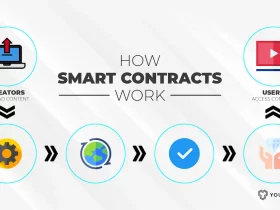Debt relief can provide a beacon of hope for those overwhelmed by financial obligations. It encompasses various strategies that aim to reduce or refinance debt to make it more manageable. Understanding the basics of these options is crucial, as they can have significant implications for one’s financial stability and future. This blog post will serve as a primer, introducing you to the core concepts of debt relief, the various methods available, and the considerations one must keep in mind when embarking on the journey toward financial freedom.
Different Loan Types
When considering debt relief, it’s imperative to recognize that not all debts are created equal. Primarily, debts can be categorized as secured or unsecured. Secured debts are tied to a tangible asset, like a home in the case of a mortgage or a car for an auto loan. If payments are not maintained, the lender can repossess the asset to recoup losses. On the other hand, payday loans and credit card debt are examples of unsecured debts, which do not have any collateral attached. This distinction plays a significant role in the type of relief options available. Getting familiar with the different types of loans can help you determine which ones to prioritize when seeking relief.
The Importance of Experience in Debt Relief
When navigating the intricacies of debt relief, experience can be your greatest ally. Working with seasoned professionals or credit counselors who have a deep understanding of debt management may make a considerable difference in the outcomes of your relief efforts. These experts can guide you through the legal and financial labyrinth, ensuring you understand the terms and implications of various relief options.
Their experience can also be instrumental in negotiating with creditors, potentially leading to more favorable repayment terms or interest rates. Always consider a professional’s track record and expertise when seeking assistance, as their experience can be the linchpin to your financial recovery and future security.
Client Reviews and Testimonials
In the world of debt relief, success stories from individuals who have navigated the process with positive results can be incredibly motivating. Client reviews and testimonials offer real-world insights into the effectiveness of debt relief strategies and the quality of service provided by professionals in the field. These narratives can provide reassurance and demonstrate the potential for achieving a debt-free life. When exploring options for debt relief assistance, looking into client testimonials gives you a sense of accountability and effectiveness more vividly than statistics can.
Interviewing Prospective Lawyers
When the time comes to select a lawyer for debt relief assistance, conducting thorough interviews is essential. You’ll want to inquire about their experience specifically with debt management and relief cases, and ask for examples of how they have assisted past clients. It’s also paramount to understand their fee structure and to ascertain that there are no hidden costs. Moreover, assessing their communication skills and availability is crucial; you need someone who responds promptly and can dedicate the necessary time to your case. The right lawyer will not only provide legal advice but will also serve as your advocate throughout the debt relief process.
Understanding Legal Fees in Debt Relief
Navigating the costs associated with hiring a lawyer for debt relief is a key component of your financial planning. Legal fees can vary widely based on the complexity of your case, the reputation and experience of the attorney, and the region in which you live. Typically, lawyers may charge a flat fee for straightforward debt negotiations, while more complex cases could be billed at an hourly rate or require a retainer.
It’s vital to have a candid discussion about fees upfront to avoid any surprises down the line. Some lawyers may offer payment plans or work on a contingency basis, where they get paid only if you win your case or successfully negotiate your debts. Always review any agreements carefully and ensure you understand the fee structure before proceeding.

The Role of Legal Networks in Debt Relief
Embracing the support of legal networks can drastically improve your journey through debt relief. These networks typically comprise experienced attorneys who specialize in various aspects of debt law, along with other financial experts. Membership often indicates a level of vetting, as attorneys within these networks are usually held to certain standards and are expected to maintain a history of successful outcomes.
Legal networks can offer a collective wealth of knowledge, enabling access to a more comprehensive suite of resources and strategies tailored to your specific circumstances. When considering the use of a legal network, assess their recognition in the field, the diversity of their professionals, and their willingness to collaborate for your benefit. This collaborative approach can leverage collective bargaining power and expertise, potentially leading to more favorable debt relief solutions.
Checking Court Records
When seeking debt relief, one critical step that should not be overlooked is checking court records. These public records can provide invaluable information regarding any past lawsuits, bankruptcy filings, or other legal proceedings related to debt that can significantly influence your approach to debt relief.
By reviewing court records, you can gather details about a creditor’s litigious history and gain insights into how they have pursued cases against debtors in the past. Such information is crucial when preparing to negotiate or when evaluating the potential risks of challenging a debt in court. It’s also a means of ensuring that all reported debts are accurate and legitimately owed, safeguarding against errors or fraudulent claims that could unjustly affect your credit.
Local vs. National Specialization in Debt Relief
When seeking out professionals for debt relief assistance, the scale of their operations—whether local or national—can make a significant difference in the service you receive. Local specialists usually have a strong understanding of state-specific laws and may offer a more personalized service due to their community ties.
They can be well-suited to address issues that require knowledge of local regulations and creditors. On the contrary, national organizations often have a broader range of resources and may be more experienced in dealing with multiple jurisdictions, which can be beneficial if your debt issues span different states. Consider the scope of your debt situation and whether it could benefit from the focused expertise of local laws or the extensive resources of a national firm.
In conclusion, understanding the basics of debt relief is crucial to navigating the complex landscape of managing and reducing debts. From different loan types and the importance of experience to legal fees and the role of legal networks, this post has provided a comprehensive overview to help you make informed decisions when seeking debt relief assistance. Remember to always do your research, understand your options, and seek professional guidance when necessary.













